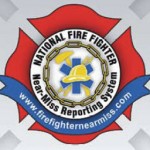Size-Up: Report of the Week (ROTW)
By Christopher J. Naum, SFPE on Oct 29, 2011 with Comments 0
In this week’s issue of the National Fire Fighter’s Near-Miss Reporting System’s Report of the Week (ROTW) an informative focus was provided on near-miss reports related to Size-Up. We’re posting the ROTW alert in it’s entirety below.
 Go over to the National Fire Fighter’s Near-Miss Reporting System and check out the resources and subcribe to the weekly ROTW today.
Go over to the National Fire Fighter’s Near-Miss Reporting System and check out the resources and subcribe to the weekly ROTW today.
Sizing up a structure for a fire attack is a skill that takes time, practice and experience to fully develop. When the first arriving (and any other arriving) officer surveys the structure, the process needs to be rapid and thorough. In some cases, if the size-up is too rapid, critical points can be overlooked. This oversight can result in unintended consequences for the initial attack team.
As seen in ROTW 11-216, it is worthwhile to take an extra minute to process the situation prior to attack.
“We were dispatched to an attic fire in a single-family home. Initial arrival was an on duty engine and ladder truck with two firefighters and one officer, who gave an on scene report of a two-story wood frame residential structure with heavy smoke showing from the rear…After seeing three sides of the building, the officer (myself) ran around to back side and found heavy flames venting from the second floor gable end off the rear of the structure. At the time it was not known if this area was an attic over a first floor addition or a room on the second floor. The officer decided a quick interior search and fire attack, pushing the fire out the already vented hole, would be the initial strategy…After searching the first floor and finding no stairs, the initial team exited the first floor and went to the rear of the structure where an exterior stairwell was found to the second floor. On initial size-up, the stairwell and two mailboxes on the house were missed, causing approximately a one minute delay to fire attack…Upon entry to the second floor, conditions were a light haze with complete visibility of the occupied area…A small pike pole was used to breach the wall while the nozzleman stood ready and the third firefighter moved hose. After an area between the studs and about two feet tall was opened, the attack line was discharged. Conditions went from almost clear to black and steamy instantly. After spraying the nozzle for less than 30 seconds (maybe even sooner) the room became too hot to occupy. All three of us announced we had to get out, almost at the same time…”
Reading the structure is as important as reading the smoke and fire conditions prior to mounting an interior attack. Aesthetics can play a large role in the building design, and what appears to be structural may truly not be safe to load. As 11-216 illustrates, the fire blowing from an upper floor window may not be as visible on the inside as it is on the outside. Once you have read the entire account of 11-216, and the related reports, consider the following:
- The report notes that, “…exterior stairwell and two mailboxes on the house were missed”. What situational loss factor would best describe why that occurred? Go to our Facebook Page and record your answer and the reason why you selected the factor.
- a. Distraction
- b. Fixation
- c. Overload
- What fire behavior phenomenon occurred when the crew opened the interior wall and experienced conditions that went from “clear to black”?
- If you were dispatched for fire in the attic and arrive to find heavy smoke and fire showing, what attack line would you select and why?
- Based solely on the information provided in 11-216, would a two out be necessary before the interior attack could commence?
- The reporter states “heavy smoke” was observed. Jot down a few factors that mean “heavy smoke” to you. Discuss what you wrote down with your colleagues.
The time pressure to go into action when we arrive at a working fire will often cause the size-up to be hurried. Remembering the lessons learned from 11-216 will make your next size-up more complete. The NMRS staff expressed thier thanks to the lieutenant from Region V for sharing what was learned.
Related Reports- Topical Relation: Size-up
Have you avoided a disaster because of a good size-up? Submit your report to www.firefighternearmiss.com today to pass on your experience.
- NFFNMRS Facebook Page, HERE
- Past Report of the Week Library, HERE
- 2011 Calendar and Annual Report, HERE
Got a Near-Miss Report to Submit? Click on the button for a direct link to the NFNMRS here
Don’t forget to go to the National Firefighter Near Miss Reporting System for number of exceptional training aids, resources, PPT and more. NFFNMRS, HERE
Filed Under: Decision-Making • Risk Assessment



























